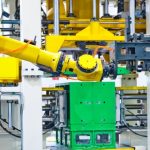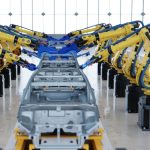As artificial intelligence systems grow in complexity, the need for seamless communication between diverse AI agents becomes increasingly critical. Google has introduced the Agent2Agent (A2A) protocol, aiming to facilitate cooperation among AI agents developed by various vendors. This development marks a significant step towards creating a more integrated AI ecosystem, where different platforms can work together efficiently. Additionally, HyperCycle’s advancements in AI interoperability complement Google’s efforts, promising enhanced collaboration and scalability in AI deployments.
Historically, AI agents from different developers have struggled to communicate effectively, leading to siloed operations and conflicting recommendations. The introduction of standardized protocols like A2A represents a shift towards addressing these interoperability challenges. Previously, organizations had to rely on middleware solutions to integrate AI agents, which often added layers of complexity and potential points of failure. The emergence of open protocols aims to streamline these integrations, reducing reliance on additional software layers and promoting more straightforward collaborations among AI systems.
How Will A2A Enhance AI Agent Communication?
A2A enables independent AI agents to interact and collaborate by providing a standardized messaging format and workflow. This allows agents to act as both clients and remote agents, depending on the context of the interaction. By facilitating secure, real-time communication and task coordination, A2A ensures that AI systems can work together seamlessly across different platforms and vendors.
What Role Does HyperCycle Play in AI Interoperability?
HyperCycle’s Node Factory framework supports the deployment of multiple AI agents, addressing challenges related to scalability and reliability. The framework promotes cross-platform interoperability by allowing agents from different developers to interact cohesively. This is achieved through a decentralized platform that mimics the “internet of AI,” enabling agents to share data and coordinate tasks effectively.
How Do A2A and HyperCycle Collaborate for Future AI Systems?
“Many more AI agents will now be able to access the nodes produced by HyperCycle Factories,” said Toufi Saliba, HyperCycle’s CEO.
This synergy between A2A and HyperCycle creates a robust environment for developing flexible and powerful AI agent systems. By standardizing communication protocols and providing a scalable infrastructure, both technologies work together to unlock new possibilities for AI collaboration and problem-solving.
Incorporating A2A with HyperCycle’s Layer 0++ blockchain infrastructure enhances the security and speed of AI agent interactions. This combination supports various use cases, including decentralized finance (DeFi), swarm AI, and decentralized payments, by ensuring reliable and efficient communication channels. The collaborative efforts between Google and HyperCycle are set to pave the way for more interconnected and capable AI systems, offering significant benefits to organizations looking to leverage multiple AI solutions seamlessly.
By addressing interoperability and scalability, Google’s A2A protocol and HyperCycle’s Node Factory are transforming how AI agents interact and collaborate. These advancements not only resolve existing challenges but also open up new avenues for AI innovation. Organizations can now deploy diverse AI agents that communicate effectively, enhancing operational efficiency and enabling more sophisticated AI-driven solutions.










